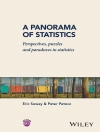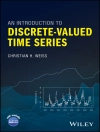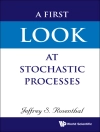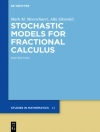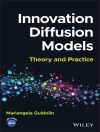Disease mapping involves the analysis of geo-referenced disease
incidence data and has many applications, for example within
resource allocation, cluster alarm analysis, and ecological
studies. There is a real need amongst public health workers for
simpler and more efficient tools for the analysis of geo-referenced
disease incidence data. Bayesian and multilevel methods provide the
required efficiency, and with the emergence of software packages
– such as Win BUGS and MLwi N – are now easy to implement
in practice.
* Provides an introduction to Bayesian and multilevel modelling
in disease mapping.
* Adopts a practical approach, with many detailed worked
examples.
* Includes introductory material on Win BUGS and MLwi N.
* Discusses three applications in detail – relative risk
estimation, focused clustering, and ecological analysis.
* Suitable for public health workers and epidemiologists with a
sound statistical knowledge.
* Supported by a Website featuring data sets and Win BUGS and
MLwi N programs.
Disease Mapping with Win BUGS and MLwi N provides a
practical introduction to the use of software for disease mapping
for researchers, practitioners and graduate students from
statistics, public health and epidemiology who analyse disease
incidence data.
قائمة المحتويات
Preface.
Notation.
0.1 Standard notation for multilevel modelling.
0.2 Spatial multiple-membership models and the MMMC
notation.
0.3 Standard notation for Win BUGS models.
1. Disease mapping basics.
1.1 Disease mapping and map reconstruction.
1.2 Disease map restoration.
2. Bayesian hierarchical modelling.
2.1 Likelihood and posterior distributions.
2.2 Hierarchical models.
2.3 Posterior inference.
2.4 Markov chain Monte Carlo methods.
2.5 Metropolis and Metropolis-Hastings algorithms.
2.6 Residuals and goodness of fit.
3. Multilevel modelling.
3.1 Continuous response models.
3.2 Estimation procedures for multilevel models.
3.3 Poisson response models.
3.4 Incorporating spatial information.
3.5 Discussion.
4. Win BUGS basics.
4.1 About Win BUGS.
4.2 Start using Win BUGS.
4.3 Specification of the model.
4.4 Model fitting.
4.5 Scripts.
4.6 Checking convergence.
4.7 Spatial modelling: Geo BUGS.
4 .8 Conclusions.
5. MLwi N basics.
5.1 About MLwi N.
5.2 Getting started.
5.3 Fitting statistical models.
5.4 MCMC estimation in MLwi N.
5.5 Spatial modelling.
5.6 Conclusions.
6. Relative risk estimation.
6.1 Relative risk estimation using Win BUGS.
6.2 Spatial prediction.
6.3 An analysis of the Ohio dataset using MLwi N.
7. Focused clustering: the analysis of putative health
hazards.
7.1 Introduction.
7.2 Study design.
7.3 Problems of inference.
7.4 Modelling the hazard exposure risk.
7.5 Models for count data.
7.6 Bayesian models.
7.7 Focused clustering in Win BUGS.
7.8 Focused clustering in MLwi N.
8. Ecological analysis.
8.1 Introduction.
8.2 Statistical models.
8.3 Win BUGS analyses of ecological datasets.
8.4 MLwi N analyses of ecological datasets.
9. Spatially-correlated survival analysis.
9.1 Survival analysis in Win BUGS.
9.2 Survival analysis in MLwi N.
10. Epilogue.
Appendix 1: Win BUGS code for focused clustering models.
A.1: Falkirk example.
A.2: Ohio example.
Appendix 2: S-Plus function for conversion to Geo BUGS
format.
Bibliography.
Index.
عن المؤلف
Andrew B. Lawson is a professor of biostatistics and eminent scholar in the Division of Biostatistics and Epidemiology in the College of Medicine at the Medical University of South Carolina. He is an ASA fellow and an advisor in disease mapping and risk assessment for the World Health Organization. Dr. Lawson has published over 100 journal papers and eight books and is the founding editor of Spatial and Spatio-temporal Epidemiology. He received a Ph D in spatial statistics from the University of St. Andrews. His research interests include the analysis of clustered disease maps, spatial and spatio-temporal disease surveillance, nutritional measurement error, and Bayesian latent variable and SEM modeling.







